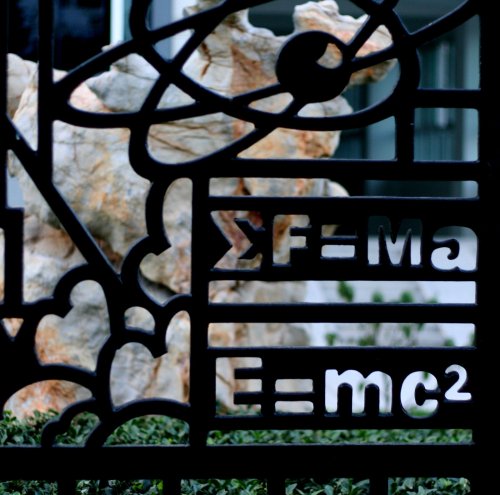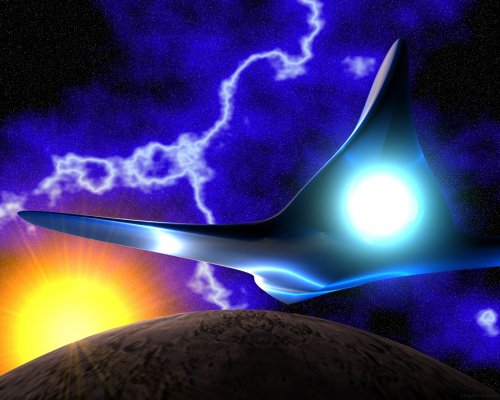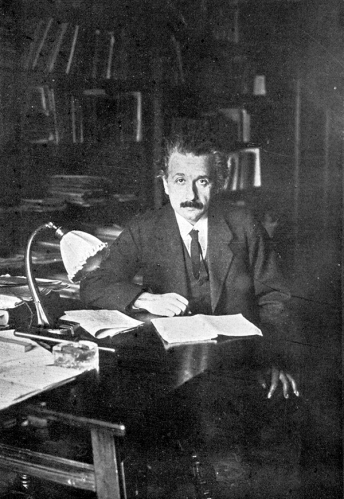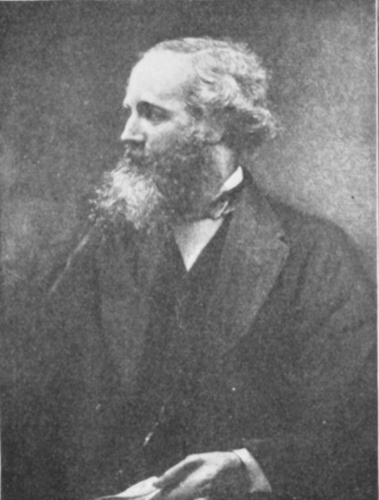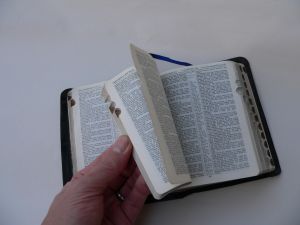|
Now,
the Scotsman comes into the picture.
No doubt Albert
Einstein was brilliant. In
1895, though, he was heavily influenced by a Scotsman when he was
doing his thought experiment about light.
In the field of special relativity, this same Scotsman beat
Albert Einstein by about 40 years.
James
Clerk Maxwell (1831 – 1879), a Scottish mathematician and theoretical physicist,
developed the classical theory electromagnetism.
Maxwell studied the works of scientists that had preceded
him, such as Gauss, Ampčre, and Faraday.
He synthesized previous unrelated observations, experiments
and equations of electricity, magnetism, and optics into a
consistent theory. Finally,
he published a purely mathematical theory in “On a Dynamical
Theory of the Electromagnetic Field” (1865).
His four simple
set of equations, known ever since as Maxwell’s
equations, demonstrated that electricity, magnetism and even
light are all manifestations of the same phenomenon: the electromagnetic
field.
Serious students
of physics and electrical engineering study “Maxwell’s
Equations” in one form or the other.
For this article, I will present the differential form
(vector calculus) for empty space.
Maxwell’s Equations in Differential
form
(for
empty space):
|
Names
|
Differential
Form
|
Explanation
|
|
Gauss’ law
|
s·E
= 0
|
There is no net electric charge emanating from any volume of
empty space
|
|
Gauss’
law for magnetism
|
s·B
= 0
|
There is no net magnetic charge emanating from any volume of
empty space
|
|
Maxwell-Faraday equation
|
s
x E = -¶B/¶t
|
The rate of change of a
Magnetic field produces a proportional perpendicular
Electric field
|
|
Ampčre’s circuital law
|
s
x B = μ0ɛ0¶E/¶t
|
The rate of change of an
Electric field produces a proportional perpendicular
Magnetic field
|
How
did the 19th century James Clerk Maxwell beat Albert
Einstein – “The Person of the 20th century?”
If you
manipulate Maxwell’s equations, they can be put into the form of
the Laplace Wave Equation:
s2u
-1/c2 ¶2u/¶t2
= 0
where c is the
speed of the propagation of the wave.
s
x E = -¶B/¶t
s
x (s
x E) = -s
x ¶B/¶t
s
(s
· E)
- s2E=
-¶/¶t (s
x B)
Substitute
s·E
= 0 and s
x B = μ0ɛ0¶E/¶t:
s
(0)
- s2E=
-¶/¶t (μ0ɛ0¶E/¶t)
Rearranging
terms:
(s2
- μ0ɛ0
¶2/¶t2) E
= 0
Note:
1/√ μ0ɛ0 = 3 x 108
m/s = c (the speed of light)
therefore
(s2
– 1/c2 ¶2/¶t2)
E
= 0
What this wave
equation - (s2
– 1/c2 ¶2/¶t2)
E
= 0 - tells us is
that all types of electromagnetic waves (visible light, ultra violet
light, infrared radiation, X-rays, microwaves, electromagnetic
fields, Gamma rays, etc.) propagate in a vacuum at the
speed of light. And this propagation is independent of the source of the electromagnetic
wave or its observers.
Written 15 years
before Einstein was born (1879), Maxwell’s equations contain the
second postulate of special relativity:
the speed of light (and all other forms of electromagnetic
waves) is a constant in a vacuum independent of its source and/or
who is observing it. Given
this postulate with the first postulate- the
laws of physics are invariant in all inertial systems - an observer
of objects in motion sees lengths contract, time dilate, masses
increase, velocities not following simple vector addition as the
speed of light is the limiting velocity, etc. Sound
familiar?
Some
conclusions:
James Clerk
Maxwell is considered one of the most (if not the most) influential
19th century scientist, who impacted physics in the 20th
century. Unfortunately,
he died at the age of 48, the year Einstein was born.
If Maxwell had lived longer and continued to produce, he may
have developed more fully the theory of relativity – made famous
by Einstein in the 20th century.
Maxwell’s
theories influenced Einstein’s thought experiment in 1895.
Einstein’s famous equation, E
= mc2, was derived from reconciling Maxwell’s
equations with the laws of conservation of energy and momentum.
In the 1860s, Maxwell’s equations contained the key
postulate – that the speed of light is independent of its source
or its observers – for the theory of special relativity (1905).
When
Einstein visited Cambridge in the 1920s, someone remarked, “You
have done great things but you stand on Newton’s shoulders.”
His reply was, “No, I stand on Maxwell’s shoulders.”
Maxwell’s
equations are still standing in the 21st century.
The only adjustments needed are minor ones for quantum
fluctuations of virtual particles in a vacuum.
This brings new
meaning to the take off on Genesis 1:3, which is seen on some
physics posters, bumper stickers (I have one of these), and
T-shirts:
And
the God said,
s·E
= ρ/ɛ0
s·B
= 0
s
X E = -¶B/¶t
s
X B = μ0J+ μ0ɛ0¶E/¶t
And
there was Light!
---------------------------------
Note:
s·E
= ρ/ɛ0
s·B
= 0
s
x E = -¶B/¶t
s
x B = μ0J+ μ0ɛ0¶E/¶t
are Maxwell’s Equations in SI units for linear materials
|
